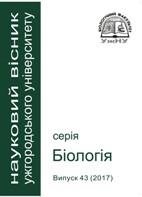Essential oil of common juniper (Juniperus communis L.) in Albania
Keywords:
Common juniper, essential oil, GC/MS, Juniperus communis L.Abstract
Genus Juniperus has about 60 species. The most wide-spread species is common juniper (Juniperus communis L.). The main raw material for the production of historical typical Slovak alcohol beverage ,,Spišská borovička” is common juniper fruits. Nowadays berries are mainly imported from Albania, where the plants are growing typically on the rocks, on barren grounds, in fields, grass fields, clear-cut areas, in open forests and in other places. In 2013 the fruits were collected from 16 localities in Albania, naturally dried, extracted essential oils and analysed by GC/MS. The content of essential oil varies in the range of 1.2% to 3.8% and from 34 to 47 substances was identified. The Albanian plants have more geographic types, which were identified on base of the essential oil composition. The first has the dominant compounds β-myrcene (44.5 ± 3.04%) and α-pinene (19.6 ± 3.35%). The second type is characterised by the contents: α-pinene (25.1 ± 1.78%), β-pinene (13.4 ± 4.41%) and β-myrcene (21.2 ± 4.79%) and the third: α-pinene (31.6 ± 1.81%), β-pinene (13.6 ± 1.78%) and β-myrcene (18.5 ± 5.60%). The last has very high content of α-pinene (37.7 ± 1.92%), β-pinene (12.4 ± 2.22%) and β-myrcene (18.6 ± 3.65%). This biodiversity monitoring of Albanian juniper plant population contributes for increasing efficiency and enhancement of spirit distillate production.
References
ŠUBOVÁ, D., AMBRÓZ, L., ORVOŠOVÁ, M., PADYŠÁKOVÁ, J., URBANOVÁ, K., BENOVÁ, A., FIRTOVÁ, A. (2010). Metodická príručka. Slovenské múzeum ochrany prírody a jaskyniarstva, Liptovský Mikuláš, Projekt: NATURA 2000, s. 41 – 58. ISBN 978-88924-72-2.
JAHODÁŘ, L. (2010). Léčivé rostliny v současné medicine. Havlíček Brian Team, Praha, 184 – 185. ISBN 978-80-87109-22-9.
RНOS, L., RECIO, C. (2005). Medicinal plants and antimicrobial activity. Journal of Ethnopharmacology. 100 (1-2):80-84.
GONNY, M., CAVALEIRO, C., SALGUEIRO, L., CASANOVA, J. (2004). Analysis of Juniperus communis subs. alpina nedele, berry, wood and root oils by combination of GC, GC/MS and C-NMR. Flavour and Fragrance Journal, 21, 99-106.
CHATZOPOULOU, P. S., KATSIOTIS, S. T. (1995). Procedures influencing the yield and the quality of the essential oil from Juniperus communis L- berries. Pharmaceutica Acta Helvetiae, 70, 247 – 253.
MARONGIU, B., PORCEDDA, S., PIRAS, A., SANNA, G., MURREDDU, M., LODDO, R. (2006). Extraction of Juniperus communis L. ssp. Nana Willd. Essential oil by supercritical carbon dioxide. Flavour and Fragrance Journal, 21, 148 – 154.
EL-CHORAB, A., SHAABAN, H. A., EL-MASSRY, K. F., SHIBAMOTO, T. (2008). Chemical Composition of Volatile Extract and Biological Activities of Volatile and Less-Volatile Extracts of Juniper Berry (Juniperus drupacea L.) Fruit., 56, 5021 – 5025.






